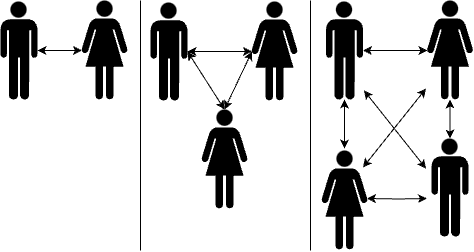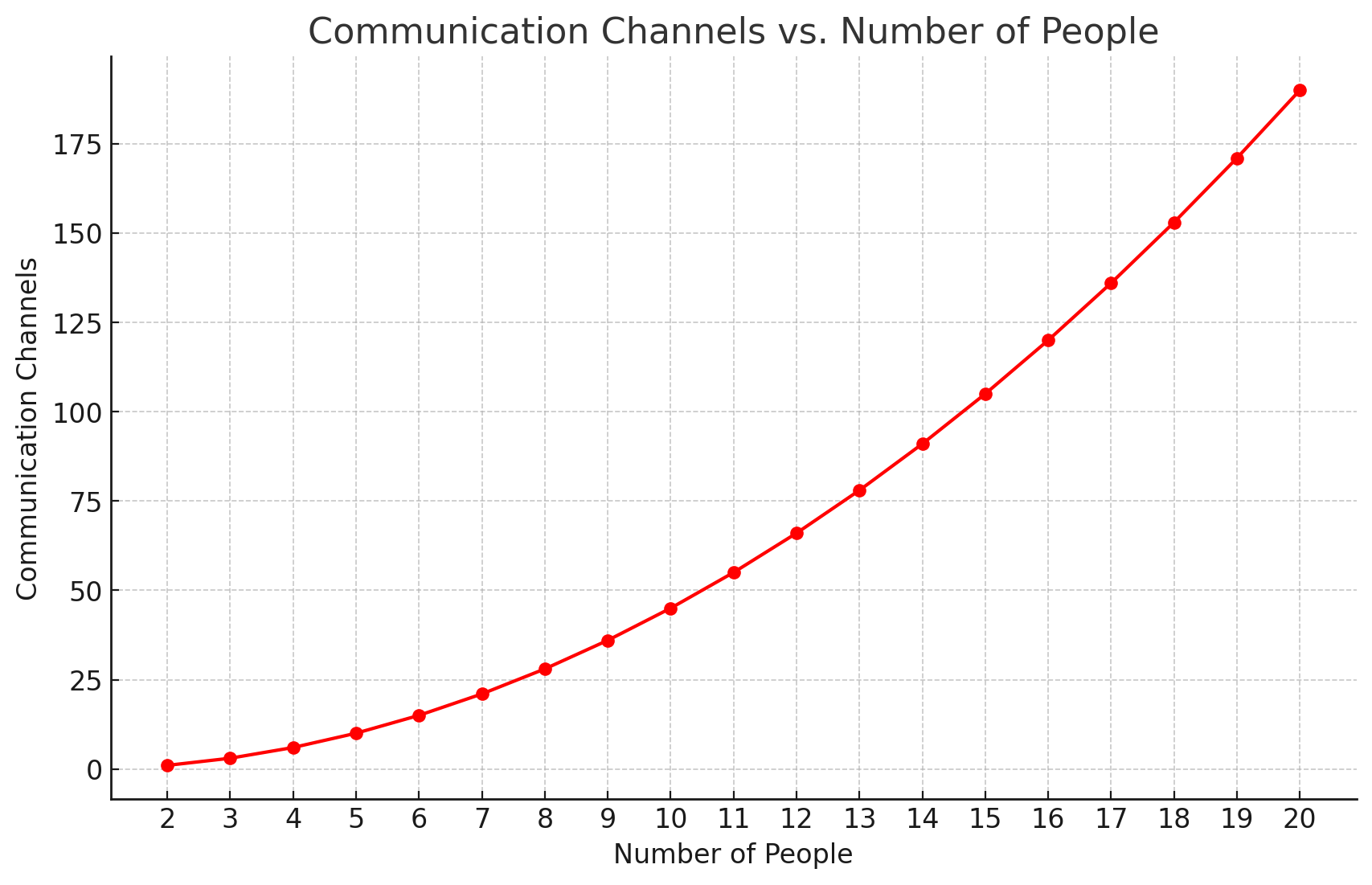When Do You Need A Framework
Growing teams need structure. Beyond 7 members, complexity rises, risking miscommunication and inefficiency. The CCR Value Maximization Process ensures clarity, streamlined decision-making, and strategic alignment, maximizing team potential and driving success.
A situation arises in every growing project or company when a framework is necessary. That number should be 7. When you have more than seven people on a project, you need a framework.
Experience and best practices suggest a more manageable team size of about 7, as supported by:
- The Magical Number Seven, Plus or Minus Two principle
- SCRUM's ideal team size started at 7 +/- 2 members now is 6 +/- 3
- Jeff Bezos's Two Pizza Rule,
- My personal experience is when a team is larger than 7, prepare to split
Let's review each in more detail and prove how each respectively relates to cognitive ability, communication channels, productive meetings, and team size management.
Cognitive Ability
In his article titled "Magical Number Seven," George A. Miller introduced the concept of Miller's law, which pertains to the capacity of working memory. According to the law, the average individual can hold approximately seven objects in their working memory at a given time. In other words, our working memory can only retain a limited amount of information, and once we exceed its capacity, we tend to forget earlier information. Miller's law has been widely cited in the field of cognitive psychology and has played an instrumental role in shaping our understanding of human memory and cognition.
Communication Channels
The SCRUM 7 +/- 2 rule was created to ensure effective communication in any team. The secret lies in the number of communication channels present in any group. As the number of people involved in a project grows, so do the possible communication channels between them.
Let's look at this visually for 2, 3, and 4 people where each line represents a channel of communication:

You can see the number of channels start to increase exponentially with just 4 people:
| People | Channels |
|---|---|
| 2 | 1 |
| 3 | 2 |
| 4 | 6 |
We can represent the number of communication channels mathematically by the formula n (n-1) /2 where n = number of people. Let's see how the number of communication channels increases with the number of people.

As the number of channels increases, you increase the complexity and potential for miscommunication within a team or organization. Information might need to be relayed through multiple channels, increasing the risk of details being lost, misunderstood, or interpreted differently by various team members. This complexity can slow decision-making, lead to inconsistencies in project execution, and ultimately affect the project's success and timeline unless you have a framework.
Productive Meetings
Have you ever been in a meeting that dragged on for hours, with too many people and insufficient progress? Jeff Bezos, the founder of Amazon, has a solution: the "two-pizza rule." This principle suggests that meetings should be limited to the number of people who can be fed with two pizzas. By keeping meetings small and efficient, communication and decision-making can be more effective. So, next time you schedule a meeting, remember the two-pizza rule and ensure you have the right people at the table.
Management Of People
In my first management role, I faced the challenge of quickly growing the team and managing 15 members. I realized immediately this was an overwhelming number of people to manage directly. To overcome this challenge, I came up with a solution. I created three smaller groups, each with a maximum size of six. This approach allowed me to focus on three critical areas of the business. When I engaged with each group, it was more manageable because the maximum number of people in a meeting was seven, easily fed by two pizzas. This strategy helped me to increase productivity and improve communication and overall team performance.
Conclusion
With more than seven people working on a project, the necessity for a structured framework becomes undeniable. The cognitive limits of our working memory, the mathematical increase in communication channels, the efficiency of meetings, and the practicalities of team management all point toward a critical threshold. Beyond this point, without a robust process in place, projects face an increased risk of miscommunication, inefficiency, and, ultimately, failure.
For your project, consider how many people could be involved: leadership, operation teams, development, test, architects, networking, security, customers, customer support, and project management. Right there, you are at 11 teams, but how many people will have valid input?
The CCR Value Maximization Process is your solution to these challenges. By implementing a well-defined framework, you will scale and manage teams beyond the critical number of seven, ensuring that communication remains clear, decision-making is streamlined, and your project adds business value. This process is not just about preventing the chaos that can ensue with larger teams; it's about harnessing the full potential of your team to drive business value effectively.
